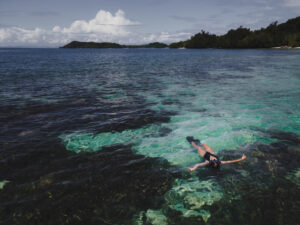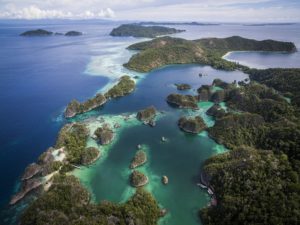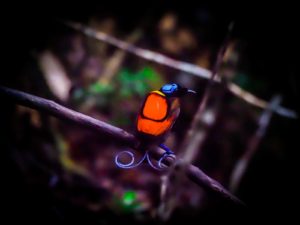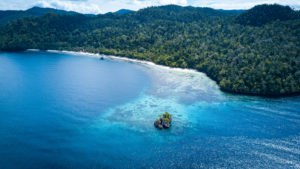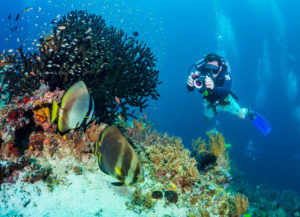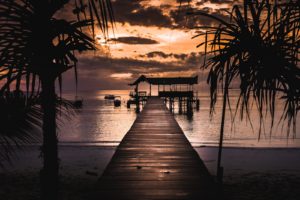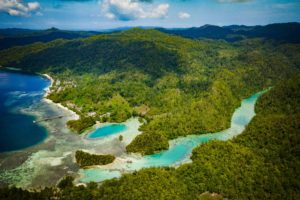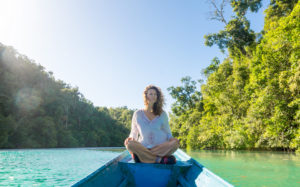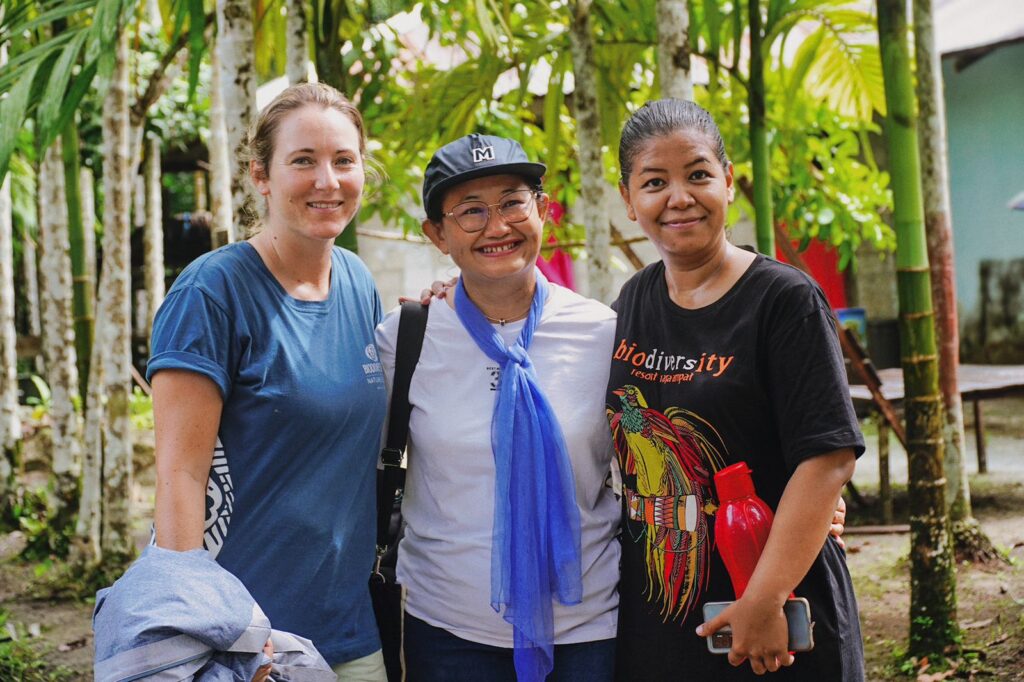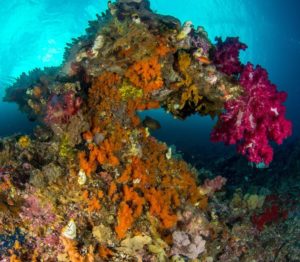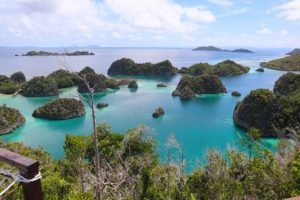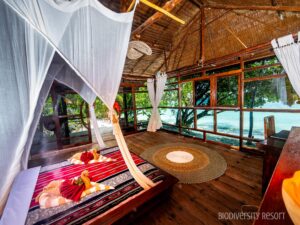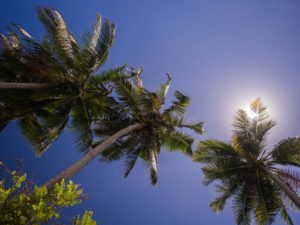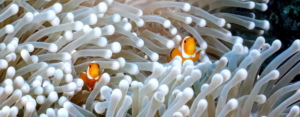Two of our guests have been so touched by this place, that they wrote an article for a scientific journal about it. We are thankful for this article about the wonders of Raja Ampat. Also, we are happy that we could host Kieran Cox and Jenna Bright here at Raja Ampat Biodiversity Eco Resort.
- Kieran Cox, Ph.D. student and Hakai Scholar, Department of Biology, University of Victoria, Victoria, British Columbia, Canada. E
- Jenna Bright, Archipelago Marine Research Ltd., Electronic Monitoring Department, Fisheries Monitoring Program, Victoria, British Columbia, Canada.
Here you can read the full article written by Kieran and Jenna.

What makes Raja Ampat a biodiversity hot spot?
Raja Ampat is a series of archipelagos that occupies 4.6 million hectares. It is in northern West Papua, Indonesia. It lies at the eastern edge of the coral triangle within the Indo-Pacific region. It has 600 islands, including the “four kings”—Waigeo, Misool, Salawait, and Batanta. Raja Ampat is the home to the world’s most diverse coral reefs.
The majority of the islands consist of steep limestone. These mounds emerging from the crystal blue water. The surrounding oceanic conditions are a mixture of the Pacific and Indian Oceans. They range from low nutrient water to mangrove marshes and seagrass bays. This oceanic setting favors larval dispersal. It also supports species from each ocean.
A mosaic of microhabitats exists because of the oceanographic conditions. By a relative isolation from the anthropological activity, there are 537 coral species. This makes up 75% of the corals worldwide. These coral reefs support 1,500 fish species residing within Raja Ampat. Almost 700 species of mollusks, 15 marine mammal species, and many migratory shark species live in these waters. This includes the Raja Ampat “walking” sharks, and marine invertebrates.


Unfortunately, Raja Ampat’s abundant resources enlist extraction interest and economic development alike. There is a lot of tourism, mining, logging along with commercial, artisanal, and illegal fisheries in this biodiversity hot spot. The pressure of legal and illegal fishing has increased as a result of declining fish stocks. Fisheries now target at least 200 species, with all stocks showing general declines. Also, the tourism industry is growing because of the promotion of the foreign entry. Still, the marine diversity has made Raja Ampat a priority for national and global conservation efforts.
Creation of a Marine Protected Area
In 2002, there has been a political unit called the Raja Ampat Regency. It aided in creating the Raja Ampat Marine Protected Area. This is a network of seven protected areas spanning 1,185,940 hectares. Besides, marine park permits have been introduced 2015. A pass costs visitors around US$100. It goes toward supporting operational and servicing costs. These endeavors are not without a continued need for support, resources, and enforcement.


Despite these conscientious efforts, the future of Raja Ampat remains uncertain. The tourism industry expands. The surrounding fisheries collapse and there are many environmental stressors. Still, Indonesia needs to expand their measures to preserve this biodiversity hot spot.
The Indonesian government should find a balance. It should serve local economic interest, allowing for appropriate development. In the same time, it should conserve the marine diversity. Interested outside parties can contribute to these measures by long-term environmental monitoring programs. Programs that focus on assessing species interactions within the coral reefs. Monitoring on how corals respond to changing social-economic and industrial pressures is necessary. Governmental and nongovernmental cooperation will also play an important role. Especially in supporting local education and outreach campaigns. Measures to reduce illegal fishing and disperse resource management are relevant. So, the future of Raja Ampat can remain as it is – exquisite.
Raja Ampat is a picturesque region. It offers an opportunity to establish marine conservation practices. If we take the wonders of Raja Ampat for granted, the consequences will be dire. Indonesia could be a global leader in marine stewardship through successful preservation.






